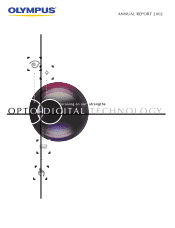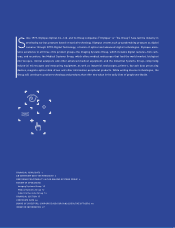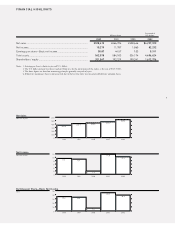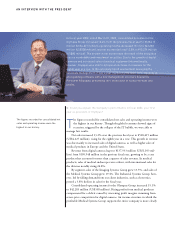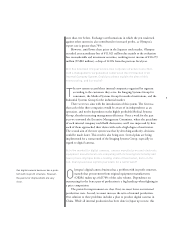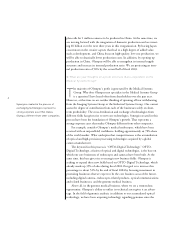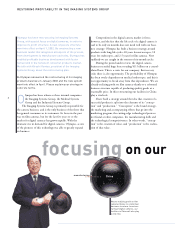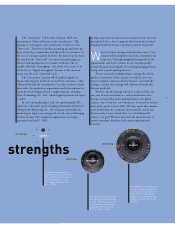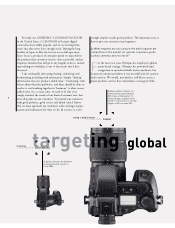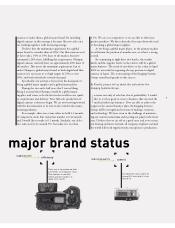Olympus 2002 Annual Report Download - page 6
Download and view the complete annual report
Please find page 6 of the 2002 Olympus annual report below. You can navigate through the pages in the report by either clicking on the pages listed below, or by using the keyword search tool below to find specific information within the annual report.
plan calls for 1 million cameras to be produced in China. At the same time, we
are moving forward with the integration of domestic production and are invest-
ing ¥6 billion over the next three years in this reorganization. By having Japan
concentrate on the creative aspects that lead to a high degree of added value,
such as development, and China focus on high-quality, low-cost production, we
will be able to drastically lower production costs. In addition, by opening up
production in China, Olympus will be able to strengthen its internal supply
structure and increase its internal production ratio. We are projecting an inter-
nal production ratio of 50% by the second half of fiscal 2003.
Q: What are your thoughts on a profit structure that is dependent on the
Medical Systems Group?
The majority of Olympus’s profit is generated by the Medical Systems
Group. Why does Olympus not specialize in the Medical Systems Group
is a question I have heard often from shareholders over the past year.
However, at this time we are neither thinking of spinning off nor withdrawing
from the Imaging Systems Group or the Industrial Systems Group. One cannot
assess the degree of contribution from each of the businesses solely on short-
term profitability. The cross-fertilization and exchange of technologies from
different fields has given rise to new core technologies. Synergies created in this
process have been the foundation of Olympus’s growth. That represents a
strong corporate asset that makes Olympus different from other companies.
For example, consider Olympus’s medical endoscopes, which have been
received with an unparalleled confidence, holding approximately an 70% share
of the world market. What underpins that competitiveness is the accumulation
of optical and high-precision processing technologies acquired by a global
camera manufacturer.
The keyword in this process is “OPTO-Digital Technology.” OPTO-
Digital Technology, a fusion of optical and digital technologies, is the base on
which our core businesses of endoscopes and cameras have been built. At the
same time, this base gives rise to strategic new business fields. Olympus is
seeking to expand these new fields based on OPTO-Digital Technology, which
already made up 35% of sales during fiscal 2002.Our goal is to increase this
percentage to about 52% by the end of fiscal 2004 by focusing investment in
promising businesses that we expect to be the core business areas of the future,
including digital cameras, endoscopes-related products, optical communications
and related businesses, and the genome medical business.
Above all, in the genome medical business, where we see a tremendous
opportunity, Olympus’s ability to utilize its technical assets gives it an advan-
tage. In the field of genomic analysis, in addition to our accumulated optical
technology, we have been acquiring technology regarding genomes since the
Synergies created in the process of
exchanging technologies represent a
strong corporate asset that makes
Olympus different from other companies.
4

